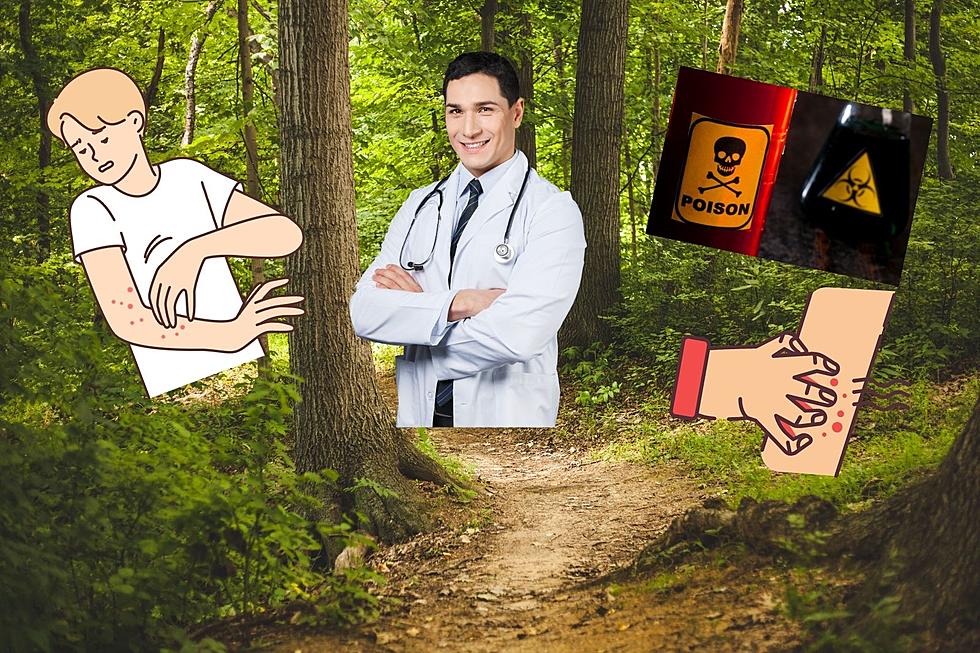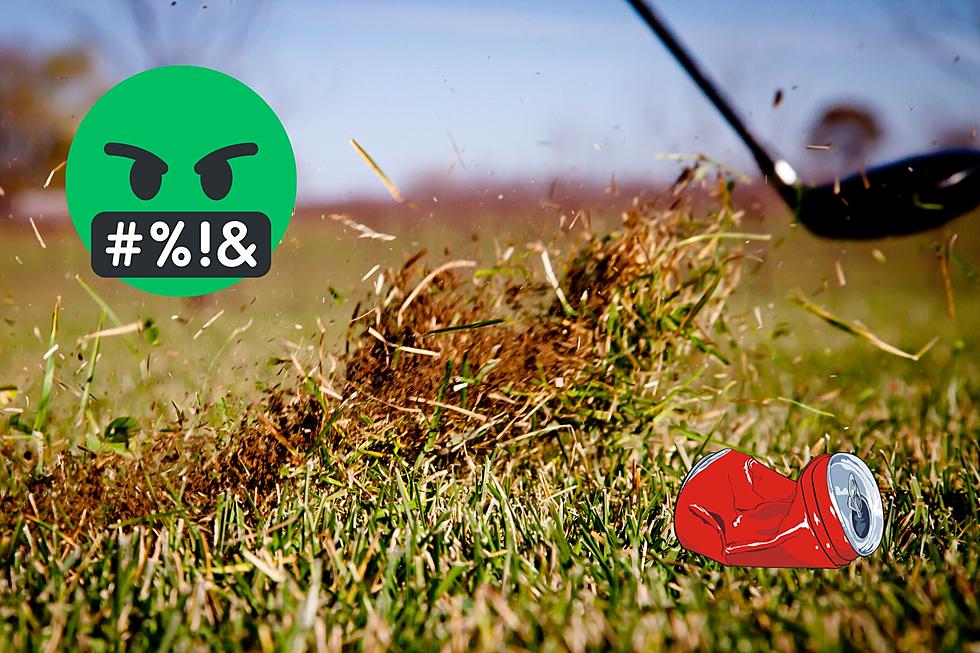
Avoid These 8 Superior Poisonous Michigan Plants At All Costs
Michigan has tons of woods to hike in. Taking the path less traveled can turn into a nightmare. If you are heading to the woods in Michigan, avoid these 8 poisonous plants in Michigan woods at all costs.
I am very allergic to some plants in Michigan. If I'm exposed, I am sentenced to many days of pure torture. From the oozing from my skin to the itching that never stops, being effected by these poisonous plants will put the toughest humans through a brutal test. The best thing you can do is avoid these plants. If you are exposed, have a "kit" handy to help treat your exposure.
I love hiking, how can I protect myself from Michigan's poisonous plants?
It's all about being proactive and anticipating the plants you may encounter. Learn about the area you will be hiking or spending time in.
Wear protective clothing, like long sleeves, pants, and gardening gloves. However, be aware that toxic oils from poisonous plants can stick to fabric and transfer to your skin. So wash all clothing exposed to dangerous plants immediately.
Do not touch plants that are unfamiliar to you.
Prevent pets and children from playing near plants that are unfamiliar to you. And teach children about the dangers of known poisonous plants.
Carry a plant pocket guide when in nature, or use an app on your phone to identify plants you come across.
Bring a poisonous plant first aid kit!
Bring a small first aid kit on nature walks, when camping, and for other activities near wild plants. Include some disinfectant wipes, a small scrub brush for cleaning fingernails, and cream to decrease itching, like calamine and antihistamine lotions. Degreasing soap, like dishwashing liquid. Outdoor skin washing soap that removes plant oils and sap. Rubbing alcohol.
Michigan's 8 Most Poisonous Plants
8. Wild Parsnip
- Botanical Name: Pastinaca sativa
- Other Common Names: Wild parsnip, parsnip
- Plant Description: Wild parsnip is a tall, upright plant with hairy, grooved stems and umbels (flat-topped clusters) of tiny yellow flowers. Its yellowish-green leaves are long and oval, with toothed (jagged) edges.
- Height at Maturity: 3-5 feet tall
- Habitat: Sunny areas of wetlands, prairies, grassy plains (savannas), and along roadsides.
- Toxic Parts of the Plant: Wild parsnip produces a toxic sap on mainly its leaves and shoots. So because of the easy transfer of the sap, it’s best to avoid touching any part of this plant with bare skin.
- Symptoms of Exposure: Touching wild parsnip can cause redness, rash, blisters, and severe sunburn. Symptoms are extreme when the skin is exposed to sunlight when touching the plant.
7. Stinging Nettle
- Botanical Name: Urtica dioica
- Other Common Names: Common nettle, nettle leaf
- Plant Description: Stinging nettle (a perennial herb) has long, heart-shaped leaves with serrated edges that grow opposite each other on a tall green stalk. This perennial herb’s stems and leaves are covered with tiny needle-sharp hairs, some of which are long and cause a painful sting when brushed against the skin. In addition, stinging nettle produces tiny dangling clusters of greenish-yellow flowers.
- Height at Maturity: 3-7 feet tall
- Habitat: In wet soils near rivers and streams, ditches, forest edges and clearings, mountain slopes
- Toxic Parts of the Plant: Avoid touching the leaves and stems without wearing thick gloves. For information about stinging nettle as an edible herb, contact your local county extension office.
- Symptoms of Exposure: Touching stinging nettle plants can cause redness, swelling, hives, and burning or tingling pain that lasts up to a few days.
6. Pokeweed
- Botanical Name: Phytolacca Americana
- Other Common Names: American pokeberry, poke salad, American nightshade, pigeon berry, skoke
- Plant Description: Pokeweed is a tall, upright, branching plant with smooth, reddish-purple stems. Its long oval leaves are dark green and shiny, and it produces long-hanging clusters of dark berries that develop from the plant’s green, white, or pinkest flowers. The berries mature to dark purple in late summer to early fall. Pokeweed plants are sometimes confused with a similar plant called knotweed. However, pokeweed usually produces a lot more berries than knotweed.
- Height at Maturity: Average height is 4-10 feet tall, but some pokeweed plants grow taller
- Habitat: This plant grows in woodlands, the edge of forests, pastures, fields, and sometimes in your yard. Pokeweed loves to grow at the opening or edge of its favorite habitats.
- Toxic Parts of the Plant: Avoid all parts of pokeweed, even if the plant is dead.
- Symptoms of Exposure: Touching pokeweed can result in an itchy red rash and blisters that last up to several days. Eating any part of this plant can cause mild to severe symptoms, including headache, diarrhea, convulsions, muscle spasms, vomiting, difficulty breathing, and loss of consciousness.
5. Poison Sumac
- Botanical Name: Toxicodendron vernix
- Other Common Names: Thunderwood, shrub oak, swamp sumac, poison elder, poison tree
- Plant Description: The poison sumac plant is a woody shrub that can look like a small tree. It grows clusters of smooth oval leaves (with 7-13 leaflet pairs in a row) on red stems, plus greenish or white berries that hang downward.
- Height at Maturity: 5-25 feet tall
- Habitat: Marshes, bogs, and swampy areas with wet soil
- Toxic Parts of the Plant: Avoid all parts of poison sumac, even if the plant is dead.
- Symptoms of Exposure: Red and itchy rashes, raised bumps, swelling, burning sensations, and fluid-filled blisters.
4. Poison Oak
- Botanical Name: Toxicodendron diversilobum or Toxicodendron pubescens
- Other Common Names: Pacific or Western poison oak ( for T. diversilobum), Atlantic or Eastern poison oak (for T. pubescens)
- Plant Description: Pacific poison oak has oval and lobed leaves that grow in three leaflets. It usually forms as a low-growing shrub but can also trail along the ground. Its new leaves are reddish and mature to green. Atlantic poison oak is a low-growing shrub that looks a lot like poison ivy. This variety of poison oak also has oval, lobed leaves that grow in a three-leaflet pattern on the stems. Both types of poison oak produce yellowish-green or green berries. Poison oak (either variety) leaves are shaped like the leaves of an oak tree and grow tiny hairs on their surface. Both plants produce little white flowers in spring.
- Height at Maturity: Pacific poison oak can grow up to 12 feet high or more and can trail along the ground for more than 80 feet. Atlantic poison oak typically grows up to 4 feet high but can also grow 10 feet tall or more.
- Habitat: Poison oak grows in woodlands, grasslands, near the edge of rivers, and coastal areas. And poison oak prefers wetter soil under some shade, so it often grows beneath trees near water.
- Toxic Parts of the Plant: Avoid all parts of poison oak, even if the plant is dead.
- Symptoms of Exposure: Similar to poison ivy, touching poison oak can cause an itchy red rash, swelling, and blisters. Symptoms could last for several days.
3. Poison Hemlock
- Botanical Name: Conium maculatum
- Other Common Names: Poison parsley, deadly hemlock, spotted hemlock, California hemlock, Nebraska hemlock, European hemlock
- Plant Description: Small, upright umbrella-shaped flower clusters grow from this tall plant’s hollow stems with purple spots. Mature flowers become ridged green fruit that eventually turns dusty brown. Like giant hogweed, poison hemlock looks similar to Queen Anne’s lace and wild carrot plants.
- Height at Maturity: 4-9 feet
- Habitat: Meadows and fields, marshes, ditches, roadsides, and other areas with wet soil and shade
- Toxic Parts of the Plant: Avoid all parts of poison hemlock, even if the plant is dead.
- Symptoms of Exposure: Poison hemlock poisoning can cause sweating, dilated pupils, weakness, dry mouth, vomiting, confusion, rapid heartbeat, and tremors. Note that severe symptoms of hemlock poisoning can start to slow essential body functions down, like a slowed heartbeat, low blood pressure, muscle paralysis, and kidney failure. Get immediate emergency medical care if ingested.
2. Poison Ivy
- Botanical Name: Toxicodendron radicans
- Other Common Names: Markweed, Eastern poison ivy
- Plant Description: Poison ivy is a climbing or trailing plant with alternating glossy and dull green leaves with either toothed or smooth edges. The leaves grow in sets of three and turn reddish in the fall. And the plant also produces tiny yellowish-green flowers and white berries.
- Height at Maturity: Poison ivy can cling to structures with its roots to climb up to 75 feet, but the plant often trails along the ground.
- Habitat: Sunny wooded areas, forest edges, roadsides, and along trails
- Toxic Parts of the Plant: Avoid all parts of poison ivy, even if the plant is dead.
- Symptoms of Exposure: Itchy red rash, swelling, and blisters could result from touching poison ivy. Also, difficulty breathing could become a symptom of inhaling the smoke from burning poison ivy plants.
1. Giant Hogweed
- Botanical Name: Heracleum mantegazzianum
- Other Common Names: Hogsbane, giant cow parsley, giant cow parsnip, cartwheel flower, wild rhubarb
- Plant Description: Giant hogweed grows large leaves with deep lobes. Its sap-sticky green stems have reddish-brown splotches and rough white hairs. This plant also produces small white flowers that grow in umbrella-shaped clusters.
- Height at Maturity: 14-16 feet
- Habitat: Forest edges, floodplain forest, wet soil near streams and rivers, roadsides, yards, vacant lots
- Toxic Parts of the Plant: Avoid all parts of the giant hogweed, even if the plant is dead.
- Symptoms of Exposure: severe rash, severe burn, blisters that scar the skin, and lasting sensitivity to sunlight.
More From Banana 101.5









